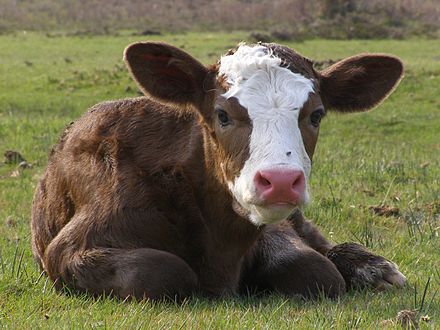The more we get together,
Together, together,
The more we get together,
The happier we’ll be.For your friends are my friends,
And my friends are your friends,
The more we get together,
The happier we’ll be!
My English Words List - January - 2022
bib
noun

apron
noun

Cantonese
noun
- the dialect of Chinese spoken in Guangzhou and Hong Kong
Cantopop (a contraction of “Cantonese pop music”) or HK-pop (short for “Hong Kong pop music”) is a genre of pop music written in standard Chinese and sung in Cantonese.
caboose
noun

kimchi
noun

- a spicy, pungent vegetable dish that consists of one or more pickled and fermented vegetables and especially napa cabbage and radishes with various seasonings (such as garlic, red chili pepper, ginger, scallions, and anchovy paste) and that is the national dish of South Korea
rucksack
noun
hikers carrying their food and water in rucksacks
backpack
noun

stuffed her backpack with so many books that she could barely walk
ahoy
interjection
- used by a sailor who is calling out to a passing ship or boat
ship ahoy
cub
noun
- a young carnivorous mammal (such as a bear, fox, or li
A cub is the young of certain large predatory animals such as big cats or bears; analogous to a domestic puppy or kitten.
panda cub
pup
noun
- a young dog, puppy
- a young animal
seal pups
puppy
noun

bunny
noun

- informal : rabbit, especially : a young rabbit
foal
noun

- a young animal of the horse family. especially : one under one year
zebra foal
kitten
noun

- a young cat
calf
noun

- the young of the domestic cow
lamb
noun

- a young sheep
The New World Order - NEWSWEEK
BY JOEL KOTKIN
For centuries we have used maps to delineate borders that have been defined by politics. But it may be time to chuck many of our notions about how humanity organizes itself. Across the world a resurgence of tribal ties is creating more complex global alliances. Where once diplomacy defined borders, now history, race, ethnicity, religion, and culture are dividing humanity into dynamic new groupings.
Broad concepts — green, socialist, or market-capitalist ideology — may animate cosmopolitan elites, but they generally do not motivate most people. Instead, the “tribe” is valued far more than any universal ideology. As the great Arab historian Ibn Khaldun observed: “Only Tribes held together by a group feeling can survive in a desert.”
Although tribal connections are as old as history, political upheaval and globalization are magnifying their impact. The world’s new contours began to emerge with the end of the Cold War. Maps designating separate blocs aligned to the United States or the Soviet Union were suddenly irrelevant. More recently, the notion of a united Third World has been supplanted by the rise of China and India. And newer concepts like the BRIC nations (Brazil, Russia, India, and China) are undermined by the fact that these countries have vastly different histories and cultures.
The borders of this new world will remain protean, subject to change over time. Some places do not fit easily into wide categories — take that peculiar place called France — so we’ve defined them as Stand-Alones. And there are the successors to the great city-states of the Renaissance — places like London and Singapore. What unites them all are ties defined by affinity, not geography.
1. New Hansa
Denmark, Finland, Germany, Netherlands, Norway, Sweden
In the 13th century, an alliance of Northern European towns called the Hanseatic League created what historian Fernand Braudel called a “common civilization created by trading.” Today’s expanded list of Hansa states share Germanic cultural roots, and they have found their niche by selling high-value goods to developed nations, as well as to burgeoning markets in Russia, China, and India. Widely admired for their generous welfare systems, most of these countries have liberalized their economies in recent years. They account for six of the top eight countries on the Legatum Prosperity Index and boast some of the world’s highest savings rates (25 percent or more), as well as impressive levels of employment, education, and technological innovation.
2. The Border Areas
Belgium, Czech Republic, Estonia, Hungary, Iceland, Ireland, Latvia, Lithuania, Poland, Romania, Slovakia, U.K.
These countries are seeking to find their place in the new tribal world. Many of them, including Romania and Belgium, are a cultural mishmash. They can be volatile; Ireland has gone from being a “Celtic tiger” to a financial basket case. In the past, these states were often overrun by the armies of powerful neighbors; in the future, they may be fighting for their autonomy against competing zones of influence.
3. Olive Republics
Bulgaria, Croatia, Greece, Italy, Kosovo, Macedonia, Montenegro, Portugal, Slovenia, Spain
With roots in Greek and Roman antiquity, these lands of olives and wine lag behind their Nordic counterparts in virtually every category: poverty rates are almost twice as high, labor participation is 10 to 20 percent lower. Almost all the Olive Republics—led by Greece, Spain, and Portugal—have huge government debt compared with most Hansa countries. They also have among the lowest birthrates: Italy is vying with Japan to be the country with the world’s oldest population.
4. City-States
London
It’s a center for finance and media, but London may be best understood as a world-class city in a second-rate country.
Paris
Accounts for nearly 25 percent of France’s GDP and is home to many of its global companies. It’s not as important as London, but there will always be a market for this most beautiful of cities.
Singapore
In a world increasingly shaped by Asia, its location between the Pacific and Indian oceans may be the best on the planet. With one of the world’s great ports, and high levels of income and education, it is a great urban success story.
Tel Aviv
While much of nationalist-religious Israel is a heavily guarded borderland, Tel Aviv is a secular city with a burgeoning economy. It accounts for the majority of Israel’s high-tech exports; its per capita income is estimated to be 50 percent above the national average, and four of Israel’s nine billionaires live in the city or its suburbs.
5. North American Alliance
These two countries are joined at the hip in terms of their economies, demographics, and culture, with each easily being the other’s largest trade partner. Many pundits see this vast region in the grip of inexorable decline. They’re wrong, at least for now. North America boasts many world-class cities, led by New York; the world’s largest high-tech economy; the most agricultural production; and four times as much fresh water per capita as either Europe or Asia.
6. Liberalistas
Chile, Colombia, Costa Rica, Mexico, Peru
These countries are the standard–bearers of democracy and capitalism in Latin America. Still suffering low household income and high poverty rates, they are trying to join the ranks of the fast-growing economies, such as China’s. But the notion of breaking with the U.S.—the traditionally dominant economic force in the region—would seem improbable for some of them, notably Mexico, with its close geographic and ethnic ties. Yet the future of these economies is uncertain; will they become more state-oriented or pursue economic liberalism?
7. Bolivarian Republics
Argentina, Bolivia, Cuba, Ecuador, Nicaragua, Venezuela
Led by Venezuela’s Hugo Chávez, large parts of Latin America are swinging back toward dictatorship and following the pattern of Peronism, with its historical antipathy toward America and capitalism. The Chávez-influenced states are largely poor; the percentage of people living in poverty is more than 60 percent in Bolivia. With their anti-gringo mindset, mineral wealth, and energy reserves, they are tempting targets for rising powers like China and Russia.
8. Stand-Alones
Brazil
South America’s largest economy, Brazil straddles the ground between the Bolivarians and the liberal republics of the region. Its resources, including offshore oil, and industrial prowess make it a second-tier superpower (after North America, Greater India, and the Middle Kingdom). But huge social problems, notably crime and poverty, fester. Brazil recently has edged away from its embrace of North America and sought out new allies, notably China and Iran.
France
France remains an advanced, cultured place that tries to resist Anglo-American culture and the shrinking relevance of the EU. No longer a great power, it is more consequential than an Olive Republic but not as strong as the Hansa.
Greater India
India has one of the world’s fastest-growing economies, but its household income remains roughly a third less than that of China. At least a quarter of its 1.3 billion people live in poverty, and its growing megacities, notably Mumbai and Kolkata, are home to some of the world’s largest slums. But it’s also forging ahead in everything from auto manufacturing to software production.
Japan
With its financial resources and engineering savvy, Japan remains a world power. But it has been replaced by China as the world’s No. 2 economy. In part because of its resistance to immigration, by 2050 upwards of 35 percent of the population could be over 60. At the same time, its technological edge is being eroded by South Korea, China, India, and the U.S.
South Korea
South Korea has become a true technological power. Forty years ago its per capita income was roughly comparable to that of Ghana; today it is 15 times larger, and Korean median household income is roughly the same as Japan’s. It has bounced back brilliantly from the global recession but must be careful to avoid being sucked into the engines of an expanding China.
Switzerland
It’s essentially a city-state connected to the world not by sea lanes but by wire transfers and airplanes. It enjoys prosperity, ample water supplies, and an excellent business climate.
9. Russian Empire
Armenia, Belarus, Moldova, Russian Federation, Ukraine
Russia has enormous natural resources, considerable scientific-technological capacity, and a powerful military. As China waxes, Russia is trying to assert itself in Ukraine, Georgia, and Central Asia. Like the old tsarist version, the new Russian empire relies on the strong ties of the Russian Slavic identity, an ethnic group that accounts for roughly four fifths of its 140 million people. It is a middling country in terms of household income — roughly half of Italy’s — and also faces a rapidly aging population.
10. The Wild East
Afghanistan, Azerbaijan, Kazakhstan, Kyrgyzstan, Pakistan, Tajikistan
This part of the world will remain a center of contention between competing regions, including China, India, Turkey, Russia, and North America.
11. Iranistan
Bahrain, Gaza Strip, Iran, Iraq, Lebanon, Syria
With oil reserves, relatively high levels of education, and an economy roughly the size of Turkey’s, Iran should be a rising superpower. But its full influence has been curbed by its extremist ideology, which conflicts not only with Western countries but also with Greater Arabia. A poorly managed economy has turned the region into a net importer of consumer goods, high-tech equipment, food, and even refined petroleum.
12. Greater Arabia
Egypt, Jordan, Kuwait, Palestinian Territories, Saudi Arabia, United Arab Emirates, Yemen
This region’s oil resources make it a key political and financial player. But there’s a huge gap between the Persian Gulf states like Saudi Arabia and the United Arab Emirates and the more impoverished states. Abu Dhabi has a per capita income of roughly $40,000, while Yemen suffers along with as little as 5 percent of that number. A powerful cultural bond—religion and race—ties this area together but makes relations with the rest of the world problematic.
13. The New Ottomans
Turkey, Turkmenistan, Uzbekistan
Turkey epitomizes the current reversion to tribe, focusing less on Europe than on its eastern front. Although ties to the EU remain its economic linchpin, the country has shifted economic and foreign policy toward its old Ottoman holdings in the Mideast and ethnic brethren in Central Asia. Trade with both Russia and China is also on the rise.
14. South African Empire
Botswana, Lesotho, Namibia, South Africa, Swaziland, Zimbabwe
South Africa’s economy is by far the largest and most diversified in Africa. It has good infrastructure, mineral resources, fertile land, and a strong industrial base. Per capita income of $10,000 makes it relatively wealthy by African standards. It has strong cultural ties with its neighbors, Lesotho, Botswana, and Namibia, which are also primarily Christian.
15. Sub-Saharan Africa
Angola, Cameroon, Central African Republic, Congo-Kinshasa, Ethiopia, Ghana, Kenya, Liberia, Malawi, Mali, Mozambique, Nigeria, Senegal, Sierra Leone, Sudan, Tanzania, Togo, Uganda, Zambia
Mostly former British or French colonies, these countries are divided between Muslim and Christian, French and English speakers, and lack cultural cohesion. A combination of natural resources and poverty rates of 70 or 80 percent all but assure that cash-rich players like China, India, and North America will seek to exploit the region.
16. Maghrebian Belt
Algeria, Libya, Mauritania, Morocco, Tunisia
In this region, spanning the African coast of the Mediterranean, there are glimmers of progress in relatively affluent countries like Libya and Tunisia. But they sit amid great concentrations of poverty.
17. Middle Kingdom
China may not, as the IMF recently predicted, pass the U.S. in GDP within a decade or so, but it’s undoubtedly the world’s emerging superpower. Its ethnic solidarity and sense of historical superiority remain remarkable. Han Chinese account for more than 90 percent of the population and constitute the world’s single largest racial-cultural group. This national cultural cohesion, many foreign companies are learning, makes penetrating this huge market even more difficult. China’s growing need for resources can be seen in its economic expansion in Africa, the Bolivarian Republics, and the Wild East. Its problems, however, are legion: a deeply authoritarian regime, a growing gulf between rich and poor, and environmental degradation. Its population is rapidly aging, which looms as a major problem over the next 30 years.
18. The Rubber Belt
Cambodia, Indonesia, Laos, Malaysia, Philippines, Thailand, Vietnam
These countries are rich in minerals, fresh water, rubber, and a variety of foodstuffs but suffer varying degrees of political instability. All are trying to industrialize and diversify their economies. Apart from Malaysia, household incomes remain relatively low, but these states could emerge as the next high-growth region.
19. Lucky Countries
Household incomes are similar to those in North America, although these economies are far less diversified. Immigration and a common Anglo-Saxon heritage tie them culturally to North America and the United Kingdom. But location and commodity-based economies mean China and perhaps India are likely to be dominant trading partners in the future.
Kotkin is a Distinguished Presidential Fellow at Chapman University of Orange County, Calif., and an adjunct fellow with the Legatum Institute in London. Legatum provided research for this article.
The New World Order: A Map BY JOEL KOTKIN ON 9/26/10 AT 7:00 AM EDT
Word of the year 2021 - Vaccine, Vax, NFT, •••
Merriam-Webster
Word of the Year: Vaccine
Insurrection
The violent events of January 6th led to a striking spike in lookups for insurrection, driven by headlines like this: “Military Joint Chiefs condemn ‘sedition and insurrection’ at US Capitol” (CNN, 1/13/21). Another, smaller spike took place in July, when the U.S. House select committee hearings on the event began.
Perseverance
The word perseverance shot to the top of our lookups in February after NASA’s Mars rover “Perseverance” landed safely on the red planet on February 18th. The rover got its name thanks to student Alexander Mather, the seventh grader who submitted the winning entry to NASA’s “Name the Rover” essay contest. The name, chosen out of 28,000 entries from K-12 students from every U.S. state and territory, is apt: Perseverance traveled almost 300 million miles over seven months—a remarkable journey.
The word perseverance is defined as “continued effort to do or achieve something despite difficulties, failure, or opposition; the action or condition or an instance of persevering; steadfastness.” It’s ultimately from Latin persevērāre, meaning “to persist in a course of action or an attitude in spite of opposition, keep on.”
Woke
Lookups for woke saw dramatic increases several times in 2021—first in April (they were up 1,373% on April 6th), then in May (up 1,279% on the 4th), and again in June (up 354% on the 24th). But it was during November’s election that the most dramatic increases occurred: lookups for woke were up 4,303% on November 8th in response to use of the word in election coverage.
The use of woke drawing interest is a new one, compared to the word’s historic use as the past tense form of wake: originating in in African American English (AAE), the new use of woke is defined in our dictionary as “aware of and actively attentive to important facts and issues (especially issues of racial and social justice).” The semantics of the newer use are, however, evolving, and it’s increasingly used as a general pejorative for anyone who is or appears to be politically left-leaning; the spikes in lookups mentioned above all correlate to instances in which reactions to racial and social injustice were dismissed as being “woke.”
The neologism wokelash combines this pejorative use with the word backlash to pin Republican political gains on a perceived adverse reaction to “woke” politics.
Nomad
When the movie Nomadland snagged three of this year’s Oscar Awards on April 25th, including Best Picture, Best Actress in a Leading Role, and Best Directing, lots of people turned to Merriam-Webster.com to look up the word nomad—enough people to make lookups jump 4,625%.
Nomad can refer specifically to a member of a people who have no fixed residence but who move from place to place, usually seasonally and within a well-defined territory, or more broadly to someone who roams about. Nomad comes from the Latin word meaning “member of a wandering pastoral people,” and ultimately from the Greek verb that means “to pasture, graze (flocks).”
Infrastructure
Lookups for infrastructure spiked 677% on April 7th, following President Biden’s announcement of his $2.3 trillion dollar plan. Subsequent spikes came in June with the announcement of a bipartisan agreement in congress on the legislation, and in November following former President Trump’s comments disparaging Republican legislators who voted for the bill and again after President Biden’s signing ceremony.
Sustained interest in this term was evident in public debates over what constitutes infrastructure and whether the word can be used to refer only to physical building and improvements to such things as roads and bridges, as opposed to some other elements of the proposal, such as broadband internet development and elder care funding. The debate was over the definition of the word itself.
The Latin roots of infrastructure mean simply “underneath or below the structure.” This word came to English from French, and is a relatively young word in English, dating to the mid-20th century. It was initially widely used in the context of building military bases, railroads, and airfields for use by NATO forces following World War II.
Cicada
Lookups for cicada were high for much of the spring and summer, as adult members of Brood X (as the particular group of periodic cicadas emerging in 2021 was called) made their way to the Earth’s surface, their larvae having been living underground for the past 17 years. Lookups were especially pronounced in May and June, when we saw increases of 1,442% and 264%, respectively.
The word cicada is defined as “any of a family (Cicadidae) of homopterous insects which have a stout body, wide blunt head, and large transparent wings,” and came to English from Latin, by way of New Latin—that is, Latin as used since the end of the medieval period especially in scientific description and classification.
Murraya
Murraya spiked in lookups on July 8th, after Zaila Avant-garde spelled it correctly to win the Scripps National Spelling Bee.
We define Murraya as “a genus of tropical Asiatic and Australian trees (family Rutaceae) having pinnate leaves and flowers with imbricated petals.”
All champion spellers study etymology in order to know the patterns of spellings in English. Zaila showed that she recognized that Murraya was an eponym, a word based upon a name, by asking the judges at the Bee: “Does this word contain the English name Murray, which could be the name of a comedian?”
The word comes from New Latin, and was named not for Bill Murray, but for Johan A. Murray, an 18th century Swedish botanist. (Zaila got a surprise congratulations from Bill Murray on “Jimmy Kimmel Live” after her win.)
The Bee always brings fresh attention to rarely looked-up words in the dictionary, and year-to-year comparisons aren’t useful when discussing words that typically get very few clicks per year. It’s safe to say that Murraya has never had so many lookups as in the days following the Bee, and may never again.
Cisgender
Cisgender saw dramatic spikes in lookups twice in 2021: the first time was in May, when lookups increased by 5,836% following the release of a CIA recruitment video in which a CIA member used the word to describe herself; the second in October, when lookups were up 20,811% after a student’s op-ed in a college newspaper used the word. Both events drew condemnation from those on the political right, as well as curiosity about the term itself.
Cisgender is defined as “of, relating to, or being a person whose gender identity corresponds with the sex the person had or was identified as having at birth.” The term is contrasted with transgender, and dates, per currently available evidence, to the mid-1990s. See more on the history and use of cisgender.
Guardian
When Cleveland’s American League baseball team chose Guardians as its new name in July, lookups of the word guardian jumped 3,142%.
The team considered more than a thousand names before settling on Guardians as a replacement for its much-criticized Indians moniker. The new name alludes to eight statuary guardians that flank both sides of Cleveland’s Hope Memorial Bridge. The Guardians of Traffic statues are 43 feet tall and, like the Greek God Hermes (the god of travel, among other things; his Roman counterpart is Mercury) they bear winged helmets on their heads.
The pertinent meaning of the word guardian here is “one that guards; custodian.” The word comes from the Middle English word gardein or wardein, source too of warden. Both words ultimately come from Anglo-French warder, “to guard.”
Meta
When one of the most prominent companies in the world chooses an abstract word as its new name, you can expect millions of people to seek more information about that word. This is exactly what occurred in October, when lookups of meta jumped 10,860% in response to Facebook’s announcement that the company would now be called “Meta.”
Meta is defined as “showing or suggesting an explicit awareness of itself or oneself as a member of its category; cleverly self-referential,” and as “concerning or providing information about members of its own category.” It’s an adjective constructed from a prefix: meta- has a number of meanings including “occurring later than or in succession to”; “situated behind or beyond”; and “later or more highly organized or specialized form of.”
The name change is part of a shift in the company’s focus to something called the metaverse. Here’s a guide to that still-emerging term.
Collins
‘NFT’, the abbreviation of ‘non-fungible token’, the unique digital identifier that records ownership of a digital asset which has entered the mainstream and seen millions spent on the most sought-after images and videos, has been named Collins Word of the Year 2021.
Oxford Dictionaries
Vax is our 2021 Word of the Year. When our lexicographers began digging into our English language corpus data it quickly became apparent that vax was a particularly striking term. A relatively rare word in our corpus until this year, by September it was over 72 times more frequent than at the same time last year. It has generated numerous derivatives that we are now seeing in a wide range of informal contexts, from vax sites and vax cards to getting vaxxed and being fully vaxxed, no word better captures the atmosphere of the past year than vax.
Inside the mind of a master procrastinator - Tim Urban - TED2016
So in college, I was a government major, which means I had to write a lot of papers. Now, when a normal student writes a paper, they might spread the work out a little like this. So, you know –
(Laughter)
you get started maybe a little slowly, but you get enough done in the first week that, with some heavier days later on, everything gets done, things stay civil.
(Laughter)
And I would want to do that like that. That would be the plan. I would have it all ready to go, but then, actually, the paper would come along, and then I would kind of do this.
(Laughter)
And that would happen every single paper.
But then came my 90-page senior thesis, a paper you’re supposed to spend a year on. And I knew for a paper like that, my normal work flow was not an option. It was way too big a project. So I planned things out, and I decided I kind of had to go something like this. This is how the year would go. So I’d start off light, and I’d bump it up in the middle months, and then at the end, I would kick it up into high gear just like a little staircase. How hard could it be to walk up the stairs? No big deal, right?
But then, the funniest thing happened. Those first few months? They came and went, and I couldn’t quite do stuff. So we had an awesome new revised plan.
(Laughter)
And then –
(Laughter)
But then those middle months actually went by, and I didn’t really write words, and so we were here. And then two months turned into one month, which turned into two weeks. And one day I woke up with three days until the deadline, still not having written a word, and so I did the only thing I could: I wrote 90 pages over 72 hours, pulling not one but two all-nighters – humans are not supposed to pull two all-nighters – sprinted across campus, dove in slow motion, and got it in just at the deadline.
I thought that was the end of everything. But a week later I get a call, and it’s the school. And they say, “Is this Tim Urban?” And I say, “Yeah.” And they say, “We need to talk about your thesis.” And I say, “OK.” And they say, “It’s the best one we’ve ever seen.”
(Laughter)
(Applause)
That did not happen.
(Laughter)
It was a very, very bad thesis.
(Laughter)
I just wanted to enjoy that one moment when all of you thought, “This guy is amazing!”
(Laughter)
No, no, it was very, very bad. Anyway, today I’m a writer-blogger guy. I write the blog Wait But Why. And a couple of years ago, I decided to write about procrastination. My behavior has always perplexed the non-procrastinators around me, and I wanted to explain to the non-procrastinators of the world what goes on in the heads of procrastinators, and why we are the way we are. Now, I had a hypothesis that the brains of procrastinators were actually different than the brains of other people. And to test this, I found an MRI lab that actually let me scan both my brain and the brain of a proven non-procrastinator, so I could compare them. I actually brought them here to show you today. I want you to take a look carefully to see if you can notice a difference. I know that if you’re not a trained brain expert, it’s not that obvious, but just take a look, OK? So here’s the brain of a non-procrastinator.
(Laughter)
Now … here’s my brain.
(Laughter)
There is a difference. Both brains have a Rational Decision-Maker in them, but the procrastinator’s brain also has an Instant Gratification Monkey. Now, what does this mean for the procrastinator? Well, it means everything’s fine until this happens.
[This is a perfect time to get some work done.] [Nope!]
So the Rational Decision-Maker will make the rational decision to do something productive, but the Monkey doesn’t like that plan, so he actually takes the wheel, and he says, “Actually, let’s read the entire Wikipedia page of the Nancy Kerrigan/ Tonya Harding scandal, because I just remembered that that happened.
(Laughter)
Then –
(Laughter)
Then we’re going to go over to the fridge, to see if there’s anything new in there since 10 minutes ago. After that, we’re going to go on a YouTube spiral that starts with videos of Richard Feynman talking about magnets and ends much, much later with us watching interviews with Justin Bieber’s mom.
(Laughter)
“All of that’s going to take a while, so we’re not going to really have room on the schedule for any work today. Sorry!”
(Sigh)
Now, what is going on here? The Instant Gratification Monkey does not seem like a guy you want behind the wheel. He lives entirely in the present moment. He has no memory of the past, no knowledge of the future, and he only cares about two things: easy and fun.
Now, in the animal world, that works fine. If you’re a dog and you spend your whole life doing nothing other than easy and fun things, you’re a huge success!
(Laughter)
And to the Monkey, humans are just another animal species. You have to keep well-slept, well-fed and propagating into the next generation, which in tribal times might have worked OK. But, if you haven’t noticed, now we’re not in tribal times. We’re in an advanced civilization, and the Monkey does not know what that is. Which is why we have another guy in our brain, the Rational Decision-Maker, who gives us the ability to do things no other animal can do. We can visualize the future. We can see the big picture. We can make long-term plans. And he wants to take all of that into account. And he wants to just have us do whatever makes sense to be doing right now. Now, sometimes it makes sense to be doing things that are easy and fun, like when you’re having dinner or going to bed or enjoying well-earned leisure time. That’s why there’s an overlap. Sometimes they agree. But other times, it makes much more sense to be doing things that are harder and less pleasant, for the sake of the big picture. And that’s when we have a conflict. And for the procrastinator, that conflict tends to end a certain way every time, leaving him spending a lot of time in this orange zone, an easy and fun place that’s entirely out of the Makes Sense circle. I call it the Dark Playground.
(Laughter)
Now, the Dark Playground is a place that all of you procrastinators out there know very well. It’s where leisure activities happen at times when leisure activities are not supposed to be happening. The fun you have in the Dark Playground isn’t actually fun, because it’s completely unearned, and the air is filled with guilt, dread, anxiety, self-hatred – all of those good procrastinator feelings. And the question is, in this situation, with the Monkey behind the wheel, how does the procrastinator ever get himself over here to this blue zone, a less pleasant place, but where really important things happen?
Well, turns out the procrastinator has a guardian angel, someone who’s always looking down on him and watching over him in his darkest moments – someone called the Panic Monster.
(Laughter)
Now, the Panic Monster is dormant most of the time, but he suddenly wakes up anytime a deadline gets too close or there’s danger of public embarrassment, a career disaster or some other scary consequence. And importantly, he’s the only thing the Monkey is terrified of. Now, he became very relevant in my life pretty recently, because the people of TED reached out to me about six months ago and invited me to do a TED Talk.
(Laughter)
Now, of course, I said yes. It’s always been a dream of mine to have done a TED Talk in the past.
(Laughter)
(Applause) But in the middle of all this excitement, the Rational Decision-Maker seemed to have something else on his mind. He was saying, “Are we clear on what we just accepted? Do we get what’s going to be now happening one day in the future? We need to sit down and work on this right now.” And the Monkey said, “Totally agree, but let’s just open Google Earth and zoom in to the bottom of India, like 200 feet above the ground, and scroll up for two and a half hours til we get to the top of the country, so we can get a better feel for India.”
(Laughter)
So that’s what we did that day.
(Laughter)
As six months turned into four and then two and then one, the people of TED decided to release the speakers. And I opened up the website, and there was my face staring right back at me. And guess who woke up?
(Laughter)
So the Panic Monster starts losing his mind, and a few seconds later, the whole system’s in mayhem.
(Laughter)
And the Monkey – remember, he’s terrified of the Panic Monster – boom, he’s up the tree! And finally, finally, the Rational Decision-Maker can take the wheel and I can start working on the talk.
Now, the Panic Monster explains all kinds of pretty insane procrastinator behavior, like how someone like me could spend two weeks unable to start the opening sentence of a paper, and then miraculously find the unbelievable work ethic to stay up all night and write eight pages. And this entire situation, with the three characters – this is the procrastinator’s system. It’s not pretty, but in the end, it works. This is what I decided to write about on the blog a couple of years ago.
When I did, I was amazed by the response. Literally thousands of emails came in, from all different kinds of people from all over the world, doing all different kinds of things. These are people who were nurses, bankers, painters, engineers and lots and lots of PhD students.
(Laughter)
And they were all writing, saying the same thing: “I have this problem too.” But what struck me was the contrast between the light tone of the post and the heaviness of these emails. These people were writing with intense frustration about what procrastination had done to their lives, about what this Monkey had done to them. And I thought about this, and I said, well, if the procrastinator’s system works, then what’s going on? Why are all of these people in such a dark place?
Well, it turns out that there’s two kinds of procrastination. Everything I’ve talked about today, the examples I’ve given, they all have deadlines. And when there’s deadlines, the effects of procrastination are contained to the short term because the Panic Monster gets involved. But there’s a second kind of procrastination that happens in situations when there is no deadline. So if you wanted a career where you’re a self-starter – something in the arts, something entrepreneurial – there’s no deadlines on those things at first, because nothing’s happening, not until you’ve gone out and done the hard work to get momentum, get things going. There’s also all kinds of important things outside of your career that don’t involve any deadlines, like seeing your family or exercising and taking care of your health, working on your relationship or getting out of a relationship that isn’t working.
Now if the procrastinator’s only mechanism of doing these hard things is the Panic Monster, that’s a problem, because in all of these non-deadline situations, the Panic Monster doesn’t show up. He has nothing to wake up for, so the effects of procrastination, they’re not contained; they just extend outward forever. And it’s this long-term kind of procrastination that’s much less visible and much less talked about than the funnier, short-term deadline-based kind. It’s usually suffered quietly and privately. And it can be the source of a huge amount of long-term unhappiness, and regrets. And I thought, that’s why those people are emailing, and that’s why they’re in such a bad place. It’s not that they’re cramming for some project. It’s that long-term procrastination has made them feel like a spectator, at times, in their own lives. The frustration is not that they couldn’t achieve their dreams; it’s that they weren’t even able to start chasing them.
So I read these emails and I had a little bit of an epiphany – that I don’t think non-procrastinators exist. That’s right – I think all of you are procrastinators. Now, you might not all be a mess, like some of us,
(Laughter)
and some of you may have a healthy relationship with deadlines, but remember: the Monkey’s sneakiest trick is when the deadlines aren’t there.
Now, I want to show you one last thing. I call this a Life Calendar. That’s one box for every week of a 90-year life. That’s not that many boxes, especially since we’ve already used a bunch of those. So I think we need to all take a long, hard look at that calendar. We need to think about what we’re really procrastinating on, because everyone is procrastinating on something in life. We need to stay aware of the Instant Gratification Monkey. That’s a job for all of us. And because there’s not that many boxes on there, it’s a job that should probably start today.
Well, maybe not today, but …
(Laughter)
You know. Sometime soon.
Thank you.
(Applause)
LeetCode - Algorithms - 866. Prime Palindrome
Problem
Java
Brute-force
Except for 11, all palindromic primes have an odd number of digits, because the divisibility test for 11 tells us that every palindromic number with an even number of digits is a multiple of 11.
1 | class Solution { |
Submission Detail
- 60 / 60 test cases passed.
- Runtime: 1087 ms, faster than 5.56% of Java online submissions for Prime Palindrome.
- Memory Usage: 35.5 MB, less than 97.78% of Java online submissions for Prime Palindrome.
- Palindromic prime
- What would be the fastest method to test for primality in Java?
- Easy to Understand c++ solution
- It is not known if there are infinitely many palindromic primes in base 10.
- December 2, 2021 is a palindrome day as 12-2-21, 12-02-2021 and 2021-12-02.
How the COVID-19 vaccines were created so quickly - Kaitlyn Sadtler and Elizabeth Wayne - TED-Ed - Transcript
In the 20th century, most vaccines took well over a decade to research, test, and produce. But the vaccines for COVID-19 cleared the threshold for emergency use in less than 11 months. The secret behind this speed is a medical technology that’s been developing for decades: the mRNA vaccine. This new treatment uses our body’s existing cellular machinery to trigger an immune response, protecting us from viruses without ever experiencing an infection. And in the future, this approach might be able to treat new diseases almost as quickly as they emerge. So how do these revolutionary vaccines work?
The key ingredient is in the name. mRNA, or messenger ribonucleic acid, is a naturally occurring molecule that encodes the instructions for producing proteins. When our cells process mRNA, a part of the cell called the ribosome translates and follows these instructions to build the encoded protein.
The mRNA in these vaccines works in exactly the same way, but scientists use the molecule to safely introduce our body to a virus. First, researchers encode trillions of mRNA molecules with the instructions for a specific viral protein. This part of the virus is harmless by itself, but helpful for training our body’s immune response. Then, they inject those molecules into a nanoparticle roughly 1,000 times smaller than the average cell. This nanoparticle is made of lipids, the same type of fatty material that forms the membrane around our cells. But these lipids have been specially engineered to protect the mRNA on its journey through the body and assist its entry into the cell. Lastly, the final ingredients are added: sugars and salt to help keep the nanoparticles intact until they reach their destination.
Before use, the vaccine is kept at a temperature of -20 to -80 degrees Celsius to ensure none of the components break down. Once injected, the nanoparticles disperse and encounter cells. The lipid coating on each nanoparticle fuses with the lipid membrane of a cell and releases the mRNA to do its work. At this point, we should note that while the vaccine is delivering viral genetic material into our cells, it’s impossible for this material to alter our DNA. mRNA is a short-lived molecule that would need additional enzymes and chemical signals to even access our DNA, let alone change it. And none of these DNA altering components are present in mRNA vaccines.
Once inside the cell, the ribosome translates the mRNA’s instructions and begins assembling the viral protein. In COVID-19 vaccines, that protein is one of the spikes typically found on the virus’s surface. Without the rest of the virus this lone spike is not infectious, but it does trigger our immune response. Activating the immune system can be taxing on the body, resulting in brief fatigue, fever, and muscle soreness in some people. But this doesn’t mean the recipient is sick— it means the vaccine is working. The body is producing antibodies to fight that viral protein, that will then stick around to defend against future COVID-19 infections. And since this particular protein is likely to be found in most COVID variants, these antibodies should reduce the threat of catching new strains.
This approach offers significant advantages over previous vaccines. Traditional vaccines contain weakened versions of live viruses or amputated sections of a virus, both of which required time intensive research to prepare and unique chemical treatments to safely inject. But mRNA vaccines don’t actually contain any viral particles, so they don’t have to be built from scratch to safely adjust each virus. In fact, every mRNA vaccine could have roughly the same list of ingredients. Imagine a reliable, robustly tested vaccine that can treat any disease by swapping out a single component. To treat a new illness, researchers would identify the right viral protein, encode it into mRNA, and then swap that mRNA into the existing vaccine platform. This could make it possible to develop new vaccines in weeks, giving humanity a flexible new tool in the never-ending fight against disease.
My English Words List - December - 2021
endemic
adjective
COVID-19 is likely to become an endemic disease.
A Nature survey shows many scientists expect the virus that causes COVID-19 to become endemic, but it could pose less danger over time.
Eighteen months later, most leading immunologists believe Covid-19 will become endemic—a persistent but manageable threat on par with seasonal flu—conceivably by the end of 2022.
Covid will become an endemic disease as early as 2024, Pfizer executives said Friday, meaning the virus will transition from a global emergency to a constant presence causing regional outbreaks across the world — much like the flu.
noun
It typically takes a few years for a new viral pathogen to move from pandemic to endemic
omicron
noun
- the 15th letter of the Greek alphabet
In November 2021, a COVID-19 variant was named Omicron, after the 15th letter of the Greek alphabet.
instant
adjective
instant coffee

Is this coffee instant or regular?
Instant noodle

Instant Pot

clementine
noun

jicama
noun

paprika
noun

tomato sauce made with garlic, paprika, and pepper
Worcestershire sauce
noun

kale
noun

bunch
noun
a bunch of grapes
a bunch of friends
a bunch of children
a bunch of money
He always had a bunch of keys on his belt.
Dried herbs hung in bunches from the kitchen rafters.
parchment
noun


Ancient people wrote on parchment.
recipe
noun

This is one of my grandmother’s recipes.
palindrome
noun

The word “dad” and the number “1881” are palindromes.
cartridge
noun
- a case or container that holds a substance, device, or material which is difficult, troublesome, or awkward to handle and that usually can be easily changed
The printer needs a new ink cartridge.


clipper
noun


- a device used for cutting something
hair clippers
nail clippers
screwdriver
noun

screw
noun

verb
Remember to screw the lid back on the jar.
Screw the light bulb into the fixture.
Screw the cap on tight.
The lid screws onto the jar.
waiver
noun
Please read the following waivers and agreements carefully.
a criminal defendant’s waiver of a jury trial
The college got a special waiver from the town to exceed the building height limit.
He signed an insurance waiver before surgery.
waive
verb
waive a jury trial
waive the fee
She waived her right to a lawyer.
The university waives the application fee for low-income students.
The bank manager waived the charge (= said we didn’t have to pay), as we were old and valued customers.
toad
noun


broom
noun

durian
noun

aisle
noun

The bride walked down the aisle to the altar.
yell
verb
- to make a sudden, loud cry
We saw people yelling for help.
I heard someone yelling my name.
billiards
noun

stapler
noun

awkward
adjective
an awkward attempt
an awkward design
She is awkward at dancing.
The machine is very awkward to operate.
passage
noun
Her office is at the end of the passage.
the passage of food through the digestive system
the passage of air into and out of the lungs
the passage from life to death
kiddo
noun
- child, kid
- used by an adult to speak to a young person
reverence
noun
Their religion has/shows a deep reverence for nature.
Reverence for or worship of the dead is found in all societies, because belief in life after death is universal. — World Religions, 1983
Reverence for Life says that the only thing we are really sure of is that we live and want to go on living. This is something that we share with everything else that lives, from elephants to blades of grass—and, of course, every human being. So we are brothers and sisters to all living things, and owe to all of them the same care and respect, that we wish for ourselves.
vestibule
noun

please leave your wet boots in the vestibule
Synonyms
entranceway, entry, entryway, hall, hallway, lobby
Vestibule (architecture)
incisor
noun
- a tooth (as any of the four front teeth of the human upper or lower jaw) for cutting

canine
noun
- a conical pointed tooth especially : one situated between the lateral incisor and the first premolar

molar
noun
- a large tooth near the back of the mouth with a broad surface used for grinding

ditch
verb
ditch an old car
If you are using a single-layer cloth mask to protect yourself from a new COVID-19 variant that is believed to be more than six times as infectious as Delta “ditch it, full stop.”
Anglosphere
noun
the countries of the world in which the English language and cultural values predominate
platter
noun

large platters of hot turkey and ham
She ordered the seafood platter.
oat
noun


earbud
noun

- a small earphone inserted into the ear
bud
noun

The bush has plenty of buds but no flowers yet.
verb
The trees budded early this spring.
canonical
adjective
As a canonical example
His proposals were generally accepted as canonical.
gospel
noun
a reading from the Gospel of St. John
drizzle
noun
- rain that falls lightly in very small drops
Yes, it’s raining, but it’s only a drizzle.
the intermittent drizzle was just heavy enough to spoil all of our outdoor activities
verb
- to rain in very small drops
It was beginning to drizzle, so she pulled on her hood.
rebate
noun
There is a $50 rebate offered with the printer.
Mail in your receipt and get a rebate.
wrestle
verb
They’ll be wrestling each other for the championship.
good-for-nothing
adjective
- of no use or value
sparrow
noun
- a common type of small bird that usually has brown or gray feathers

parrot
noun

verb
Some of the students were just parroting what the teacher said.
the toddler parroted everything her father said, often to the latter’s embarrassment
biodegradable
adjective
biodegradable trash bags
fasten
verb
Make sure the lid is tightly fastened.
two boards fastened together by nails
fastener



trampoline
noun

Primes
The primes,
through times,
mystified
those who pried.
One fact answers why
they’re simple yet sly:
Layers of abstraction yield
complex forms when pierced and peeled.
Addition lies under multiplication,
defining him as repeated summation.
Then he defines primes as the atoms of integers,
for when multiplied, they give numbers their signatures.
But when we breach the layer between these two distinct operations,
asking about how primes add and subtract, there are endless frustrations.
Even innocuous questions, “what are all their sums?”, or “how often do they differ by two?”,
stump everyone who has ever lived, with progress made only quite recently by just a few.
However, to recruit for and progress math we need to have such questions which can be phrased simply and remain unsolved.
What child does not hear such conjectures and dream, if only for a moment, that they will be the one to see them resolved?
For otherwise the once vigorous curiosity of a child towards math’s patterns, as they grow older, tends to grow tame,
just as the rhyme and rhythm of the primes seems to fade as numbers grow, though in both the underlying patterns remain the same.
- Math Poetry
- 20 is not a prime number, 21 is not a prime number, 2021(=43x47) is not a prime number.
- 11 is a prime number, 29 is a prime number, 1129 is a prime number.
Congruent Number and Elliptic Curve
Once Marcus du Sautoy asked Sir Andrew Wiles what he’d scribble in the margin he’d proved to tease next generation. Answer: congruent number problem
A congruent number is a positive integer that is the area of a right triangle with three rational number sides.

\(
\displaystyle
\begin{matrix}
a^{2}+b^{2}&=&c^{2},\\
\frac{1}{2}ab&=&n.
\end{matrix}
\)
\(
\displaystyle
\begin{matrix}
a^2 = c^2 - b^2 \\
2a^2 + 2ac = a^2 + c^2 + 2ac - b^2 \\
2ab(a+c) = b(a+c)^{2} - b^{3} \\
4n(a+c) = b(a+c)^{2}-b^{3} \\
\frac{4n(a+c)}{b^4} = \frac{(a+c)^{2}}{b^{3}}-\frac{1}{b} \\
\frac{4n^{4}(a+c)^{2}}{b^{4}} = \frac{n^{3}(a+c)^{3}}{b^3}-\frac{n^3(a+c)}{b} \\
(\frac{2n^2(a+c)^2}{b^2})^{2} = (\frac{n(a+c)}{b})^{3} - n^{2}(\frac{n(a+c)}{b}) \\
set \hspace{1mm} y = \frac{2n^2(a+c)}{b^2}, \\
x = \frac{n(a+c)}{b} \\
y^2 = x^3 - n^2x
\end{matrix}
\)
n is a congruent number if and only if the elliptic curve \( y^2 = x^3-n^2x \) contains a rational point with \( y \neq 0 \)
\(
\displaystyle
\begin{matrix}
x = \frac{n(a+c)}{b} = \frac{n(c+a)(c-a)}{b(c-a)} = \frac{nb}{c-a} \\
y = \frac{2n^2(a+c)}{b^2} = \frac{2n^2(a+c)}{c^2-a^2} = \frac{2n^2}{c-a} \\
\frac{x}{y}=\frac{b}{2n} \\
b = \frac{2nx}{y}, \\
a=\frac{2a^2+2ac}{2(a+c)} \\
=\frac{a^2+2ac+a^2}{2(a+c)} \\
=\frac{a^2+2ac+c^2-b^2}{2(a+c)} \\
=\frac{(a+c)^2-b^2}{2(a+c)} \\
=\frac{n^2(a+c)^2-b^2n^2}{2n^2(a+c)} \\
=\frac{(\frac{n(a+c)}{b}^{2}-n^2}{\frac{2n^2(a+c)}{b^2}} \\
=\frac{x^2-n^2}{y}, \\
c=\frac{2c(a+c)}{2(a+c)} \\
=\frac{2c^2+2ac}{2(a+c)} \\
=\frac{a^2+c^2+2ac+c^2-a^2}{2(a+c)} \\
=\frac{(a+c)^2+c^2-a^2}{2(a+c)} \\
=\frac{(a+c)^2+b^2}{2(a+c)} \\
=\frac{n^2(a+c)^2+b^2n^2}{2n^2(a+c)} \\
=\frac{(\frac{n(a+c)}{b})^2+n^2}{\frac{2n^2(a+c)}{b^2}} \\
=\frac{x^2+n^2}{y}
\end{matrix}
\)
We have a bijection(one-to-one correspondence)
\(
\Large
\{(a,b,c) \in \mathbb{Q}^{3} \mid a^2+b^2=c^2,\frac{ab}{2}=n \} \leftrightarrow \{(x,y) \in \mathbb{Q}^{2} \mid y^2 = x^3-n^2x \hspace{1mm} and \hspace{1mm} y \neq 0 \}
\)
with inverse functions
\(
\Large
(a,b,c) \mapsto (\frac{nb}{c-a},\frac{2n^2}{c-a}) \hspace{8pt} and \hspace{8pt} (x,y) \mapsto (\frac{x^2-n^2}{y},\frac{2nx}{y},\frac{x^2+n^2}{y})
\)
\( y^2 = x^3-25x \) has rational point \( x=-4, y= \pm 6 \), 5 is a congruent number.
\(
\begin{align*}
\begin{cases}
a = \frac{-4^2-5^2}{-6} = \frac{3}{2} \\
b = \frac{2\times5\times-4}{-6} = \frac{20}{3} \\
c = \frac{-4^2+5^2}{6} = \frac{41}{6}
\end{cases}
\end{align*}
\)
\( y^2 = x^3-36x \) has rational points
\(
\displaystyle
\begin{matrix}
x=-3,\hspace{1mm} y= \pm 9, \\
x=-2,\hspace{1mm} y= \pm 8, \\
x=12,\hspace{1mm} y= \pm 36, \\
x=18,\hspace{1mm} y= \pm 72, \\
\end{matrix}
\),
6 is a congruent number.
\(
\begin{align*}
\begin{cases}
a = \frac{12^2-6^2}{36} = 3 \\
b = \frac{2\times6\times12}{36} = 4 \\
c = \frac{12^2+6^2}{36} = 5
\end{cases}
\end{align*}
\)
- One very old problem concerned with rational points on elliptic curves is the congruent number problem. One way of stating it is to ask which rational integers can occur as the areas of right-angled triangles with rational length sides. Such integers are called congruent numbers. … It is closely related to the problem of determining the rational points on the curve \( C_n : y^2 = x^3 − n^2x \). … As an example of this, consider the conjecture of Euler from 1769 that \( x^4 + y^4 + z^4 = t^4 \) has no non-trivial solutions. By finding a curve of genus 1 on the surface and a point of infinite order on this curve, Noam Elkies found the solution \( 2682440^4 + 15365639^4 + 18796760^4 = 20615673^4\) . His argument shows that there are infinitely many solutions to Euler’s equation. – The Birch And Swinnerton-Dyer Conjecture, by Andrew Wiles

